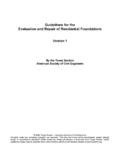Transcription of GRI 101: FOUNDATION 2016 - Global Reporting …
1 GRI101 gri 101 : FOUNDATION 20162 gri 101 : FOUNDATION 2016 ResponsibilityThis Standard is issued by the Global Sustainability Standards Board (GSSB). The full set of GRI Standards can be downloaded at Any feedback on the GRI Standards can be submitted to for the consideration of the 101: FOUNDATION applies to any organization that wants to use the GRI Standards to report about its economic, environmental, and/or social impacts. Therefore, this Standard is applicable to: an organization that intends to prepare a sustainability report in accordance with the GRI Standards; or an organization that intends to use selected GRI Standards, or parts of their content, to report on impacts related to specific economic, social, and/or environmental topics ( , to report on emissions only). gri 101 can be used by an organization of any size, type, sector, or geographic referencesThis Standard is to be used together with the most recent versions of the following documents.
2 GRI 102: General DisclosuresGRI 103: Management Approach GRI Standards GlossaryIn the text of this Standard, terms defined in the Glossary are dateThis Standard is effective for reports or other materials published on or after 1 July 2018. Earlier adoption is encouraged. About this StandardContentsIntroduction 3 A. Background on sustainability Reporting 3B. Overview of the GRI Sustainability Reporting Standards 3C. Using this Standard 5 gri 101 : FOUNDATION 71. Reporting Principles 72. Using the GRI Standards for sustainability Reporting 173. Making claims related to the use of the GRI Standards 21 Key Terms 27 3 gri 101 : FOUNDATION 2016 GRI 103 GRI 102 Topic-specificStandardsUniversal StandardsStarting point for using the GRI StandardsGRI 101 FoundationGeneral DisclosuresManagement ApproachTo report contextual information about an organizationTo report the management approach for each material topicSelect from these to report specific disclosures for each material topicGRI 300 EnvironmentalGRI 400 SocialGRI 200 EconomicFigure 1 Overview of the set of GRI StandardsA.
3 Background on sustainability Reporting In 1987, the World Commission on Environment and Development set out an aspirational goal of sustainable development describing it as development which meets the needs of the present without compromising the ability of future generations to meet their own needs. 1 Through their activities and relationships, all organizations make positive and negative contributions toward the goal of sustainable development. Organizations therefore have a key role to play in achieving this Reporting , as promoted by the GRI Standards, is an organization s practice of Reporting publicly on its economic, environmental, and/or social impacts, and hence its contributions positive or negative towards the goal of sustainable this process, an organization identifies its significant impacts on the economy, the environment, and/or society and discloses them in accordance with a globally-accepted standard. The GRI Standards create a common language for organizations and stakeholders, with which the economic, environmental, and social impacts of organizations can be communicated and understood.
4 The Standards are designed to enhance the Global comparability and quality of information on these impacts, thereby enabling greater transparency and accountability of Reporting based on the GRI Standards should provide a balanced and reasonable representation of an organization s positive and negative contributions towards the goal of sustainable development. The information made available through sustainability Reporting allows internal and external stakeholders to form opinions and to make informed decisions about an organization s contribution to the goal of sustainable development. B. Overview of the GRI Sustainability Reporting Standards The GRI Sustainability Reporting Standards (GRI Standards) are designed to be used by organizations to report about their impacts on the economy, the environment, and/or society. Using the GRI Standards as a set to prepare a sustainability reportThe GRI Standards are structured as a set of interrelated standards.
5 They have been developed primarily to be used together to help an organization prepare a sustainability report which is based on the Reporting Principles and focuses on material topics. Introduction1 World Commission on Environment and Development. Our Common Future . Oxford: Oxford University Press, 1987, p. 434 gri 101 : FOUNDATION 2016 Preparing a report in accordance with the GRI Standards demonstrates that the report provides a full and balanced picture of an organization s material topics and related impacts, as well as how these impacts are managed. A report in accordance with the GRI Standards can be produced as a stand-alone sustainability report, or can reference information disclosed in a variety of locations and formats ( , electronic or paper-based). Any report prepared in accordance with the GRI Standards is required to include a GRI content index, which is presented in one location and includes the page number or URL for all disclosures reported.
6 See clause in this Standard and Disclosure 102-55 in GRI 102: General selected GRI Standards, or parts of their content, to report specific informationAn organization can also use selected GRI Standards, or parts of their content, to report specific information, provided that the relevant Standards are referenced correctly. See Section 3 for more detail on using and referencing the GRI of the StandardsThe GRI Standards are divided into four series:Series Description Universal Standards 100 series The 100 series includes three universal Standards: gri 101 : FOUNDATION is the starting point for using the set of GRI Standards. gri 101 sets out the Reporting Principles for defining report content and quality. It includes requirements for preparing a sustainability report in accordance with the GRI Standards, and describes how the GRI Standards can be used and referenced. gri 101 also includes the specific claims that are required for organizations preparing a sustainability report in accordance with the Standards, and for those using selected GRI Standards to report specific information.
7 GRI 102: General Disclosures is used to report contextual information about an organization and its sustainability Reporting practices. This includes information about an organization s profile, strategy, ethics and integrity, governance, stakeholder engagement practices, and Reporting 103: Management Approach is used to report information about how an organization manages a material topic. It is designed to be used for each material topic in a sustainability report, including those covered by the topic-specific GRI Standards (series 200, 300, and 400) and other material topics. Applying GRI 103 with each material topic allows the organization to provide a narrative explanation of why the topic is material, where the impacts occur (the topic Boundary), and how the organization manages the Standards 200 series (Economic topics) 300 series (Environmental topics) 400 series (Social topics)The 200, 300, and 400 series include numerous topic-specific Standards.
8 These are used to report information on an organization s impacts related to economic, environmental, and social topics ( , Indirect Economic Impacts, Water, or Employment). To prepare a sustainability report in accordance with the GRI Standards, an organization applies the Reporting Principles for defining report content from gri 101 : FOUNDATION to identify its material economic, environmental, and/or social topics. These material topics determine which topic-specific Standards the organization uses to prepare its sustainability report. Selected topic-specific Standards, or parts of their content, can also be used to report specific information, without preparing a sustainability report. See Section 3 for more detail. Introduction 5 gri 101 : FOUNDATION 2016C. Using this StandardOverview of contents gri 101 : FOUNDATION is the starting point for an organization to use the GRI Standards to report about its economic, environmental, and/or social impacts.
9 Section 1 of this Standard presents the Reporting Principles for defining report content and report quality. These Reporting Principles are fundamental to helping an organization decide what information to include in a sustainability report and how to ensure the quality of the information. Section 2 explains the basic process for using the GRI Standards for sustainability Reporting . This section includes fundamental requirements for applying the Reporting Principles, and for identifying and Reporting on material topics. Section 3 sets out the ways that the GRI Standards can be used and the specific claims, or statements of use, which are required for organizations using the , recommendations, and guidanceThe GRI Standards include: Requirements: These are mandatory instructions. In the text, requirements are presented in bold font and indicated with the word 'shall'. Requirements are to be read in the context of recommendations and guidance; however, an organization is not required to comply with recommendations or guidance in order to claim that a report has been prepared in accordance with the Standards.
10 Recommendations: These are cases where a particular course of action is encouraged, but not required. In the text, the word should indicates a : These sections include background information, explanations and examples to help organizations better understand the organization is required to comply with all applicable requirements in order to make a claim that its report has been prepared in accordance with the GRI Standards. See Table 1 in Section 3 for more 2 on the next page gives an example of how requirements, recommendations, and guidance are set out in a topic-specific GRI Standard. IntroductionNote: This document includes hyperlinks to other Standards. In most browsers, using ctrl + click will open external links in a new browser window. After clicking on a link, use alt + left arrow to return to the previous 101: FOUNDATION 2016 GRI 302: Energy 201611 Disclosure 302-4 Reduction of energy consumption Reporting When compiling the information specifi ed in Disclosure 302-4, the Reporting organization shall: exclude reductions resulting from reduced production capacity or outsourcing; describe whether energy reduction is estimated, modeled, or sourced from direct measurements.
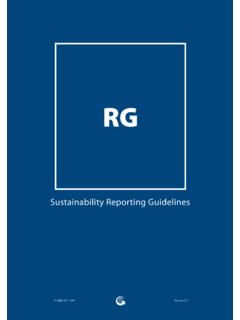
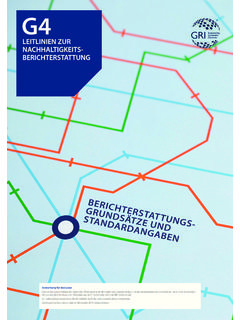

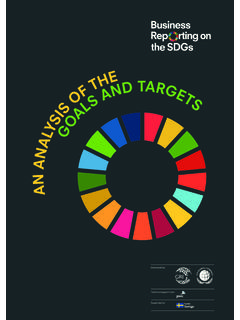


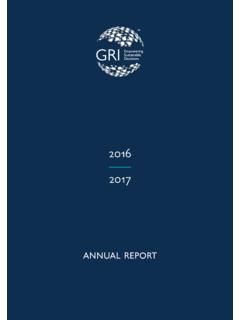
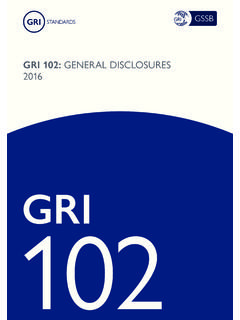


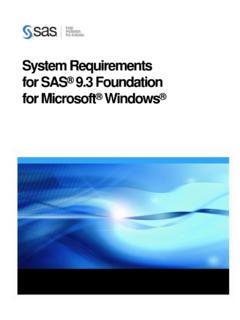

![SUBCHAPTER 11 [1105.3] 685 Foundation Piers …](/cache/preview/d/7/f/c/f/d/2/1/thumb-d7fcfd219d3c454c0126ee5fed8ba8be.jpg)



